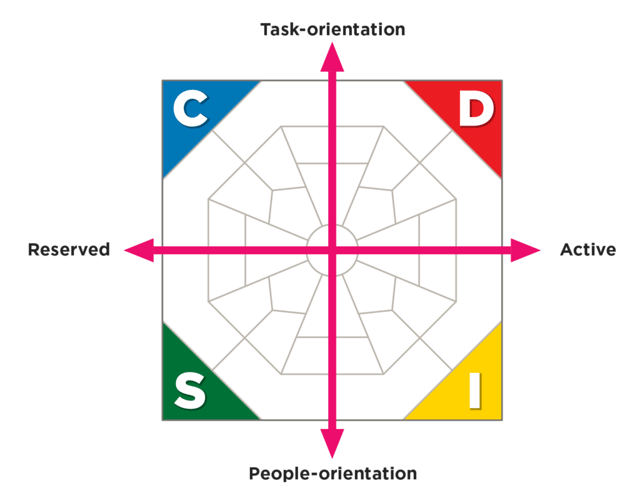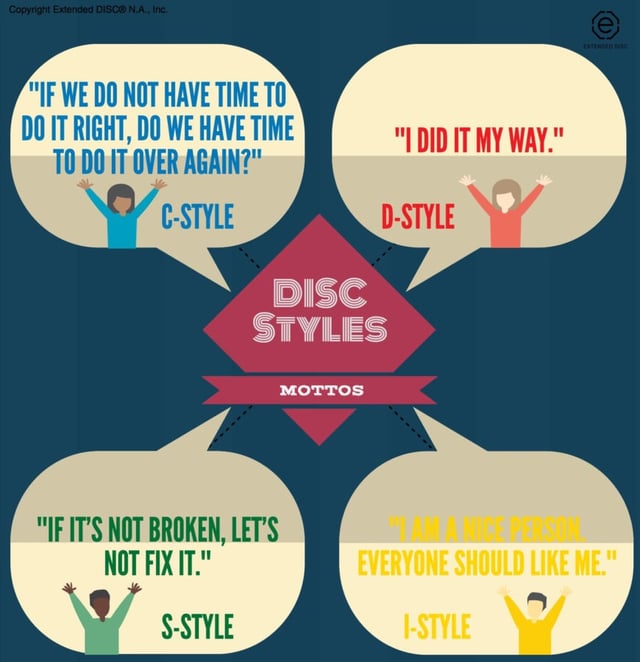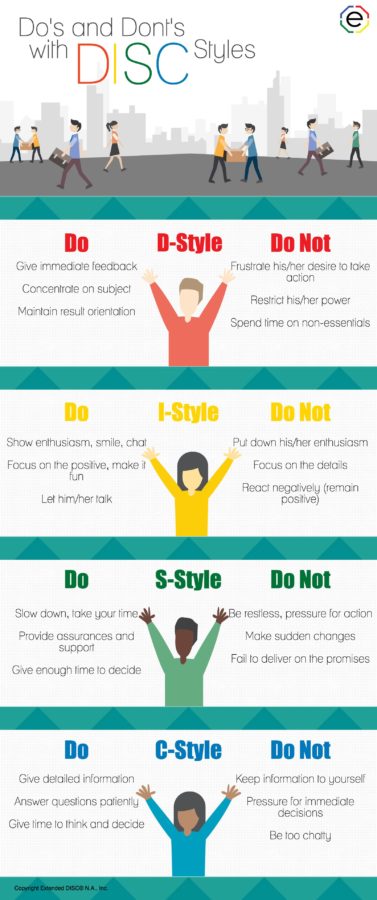You've probably heard of DISC tests, DISC assessments or DISC profiles but are they all the same? What is the purpose of DISC and DISC tools?
DISC Assessments are behavioral assessment tools. Simply put, they measure how a person naturally prefers to do things and interact with others. DISC has had a long history of development and research in order to become today's DISC tool.
What are DISC Assessments?
DISC assessments are self-evaluation tools. They are simple, but powerful tools that measure our natural, most comfortable behaviors. The tools are based on the DISC theory which classifies four behavioral styles. The four behavioral styles are easily identified by their letters, D, I, S, and C.

First, the tool can help us be more aware of how we prefer to go about the day. We have a natural behavioral style or a preferred way of doing things. Secondly, but equally as important, we need to be able to identify the preferred style of others. Once we have this information then we make adjustments to our behaviors. We can focus on how others prefer to be treated. Hence, the DISC assessments provide insightful ways to be more aware of our style, identify the style of others, and tips to modify our behaviors.
The DISC assessment does not measure intelligence, attitude, values, or abilities. Instead, the tool focuses on behavior since we can make effective changes to behaviors. There are many DISC tools that are based on the DISC model. However, not all DISC tools measure the same thing. How does our DISC tool, so simple on the surface, provide such valid and powerful data? Our DISC assessments are built on years of research and constant validation.
Brief History of DISC
In the early 1920’s, Carl Gustav Jung, a psychologist, described the four types of human behavior. This simple model of human behavior laid the groundwork for DISC tools that are in use today. Shortly after, William Moulton Marston built upon Jung’s work and created a four quadrant model of DISC behavioral styles. Marston was a psychologist, lawyer, and inventor. He was also a comic book writer and creator of the comic super hero, Wonder Woman! Marston wanted to increase self-awareness and how to better understand other people by measuring the emotions of “normal people.” However, he did not actually develop the tools to assess people.
In 1956, Walter Clarke, an industrial psychologist, developed the first tools using Marston's DISC theory. These early DISC assessments were used in businesses for support in job placement and hiring.
Jukka Sappinen, a business consultant, began developing the Extended DISC tools back in 1991. He was already familiar with the different tools available at the time. However, he wanted to develop a tool that was more powerful and based on the specific needs of the clients. The Extended DISC tool is a simple system that focuses on the individual, but also on teams. In addition, the tool can be useful at the organization level.
Intro to the DISC Model
 The DISC model is a tool for self-awareness. In addition, the DISC model lets us identify the styles of others. Once we know our style, the style of others, then we can change our behaviors to improve interactions. DISC refers to the four core sets of behavioral styles. The first letter of each of the styles creates an easy to remember acronym: D, I, S, and C. The various combinations of the following four styles determine our own natural DISC style. No combination is better than another.
The DISC model is a tool for self-awareness. In addition, the DISC model lets us identify the styles of others. Once we know our style, the style of others, then we can change our behaviors to improve interactions. DISC refers to the four core sets of behavioral styles. The first letter of each of the styles creates an easy to remember acronym: D, I, S, and C. The various combinations of the following four styles determine our own natural DISC style. No combination is better than another.
Each behavioral style has a preferred way to doing things. Each style has behaviors that produces energy and motivation and ones that require energy. The DISC style have differences, but they also have similarities. Keep in mind that no DISC style is better or worse. They all have strengths and they all have areas of growth.
The DISC quadrants are divided into halves to make it easier to identify DISC styles. D-styles and C-styles are task-oriented styles versus the more people-oriented I-styles and S-styles. S-styles and C-styles are more reserved whereas, D-styles and I-styles are more active.
The DISC model helps us succeed by providing a clear framework to make decisions about how to adjust behavior while interacting with others. The DISC model is powerful because it is easy to learn, understand, and use. A simple way to understand the DISC Model is to think remember it is a map. Where you are placed on the map identifies your natural DISC profile.
Intro to the DISC profiles

The D-Style is often referred to as Dominant or Driver. An I-Style is sometimes called the Influencer or Interactive. The S-Style is often labeled as Stable or Steady while the C-Style is often labeled as Compliant or Correct. However, using the D, I, S, or C letters insures that people don't disassociate themselves with the DISC style simply because they don't strongly align with the single word descriptors.
D-styles are task-oriented and active. They want power and to be in control. They are aggressive and blunt. D-styles are focused on moving fast and making quick decisions. Under pressure, they can show a lack of concern for others. Tips for interacting with D-styles include responding quickly, focusing on tasks and results, but let them feel in control.

I-styles are people-oriented and active. They are energetic, talkative, and like to be the center of attention. I-styles are optimistic and charismatic. They prefer the big picture over details so they can become disorganized and impulsive. I-styles like to be liked. They excel at socializing. Tips for interacting with the I-style include setting aside time to chat, be positive, but avoid details.
S-styles are reserved and people-oriented. They are steady and prefer things to remain the same. S-styles want stability and security. While they do like people, they prefer people they know. S-styles are reliable and the team players of the DISC styles. Tips for interacting with an S-style include building trust, but slow down and avoid sudden changes.
C-styles are reserved and task-oriented. They are the most analytical and reserved of the four behavioral styles. They are rule followers, and focus on details. C-styles are logical and cautious. Others can see them as nit-picky. Tips for interacting with C-styles include answering all their questions, but avoid chattiness, and pressuring them to decide.
Final thoughts on DISC Assessments
The DISC assessment is based on the DISC model. People use the DISC assessment to help individuals, teams, and organizations make better decisions. Hence, they use the information to take actions to improve their performance. When we understand our natural behavior then we can better communicate with all DISC styles.
